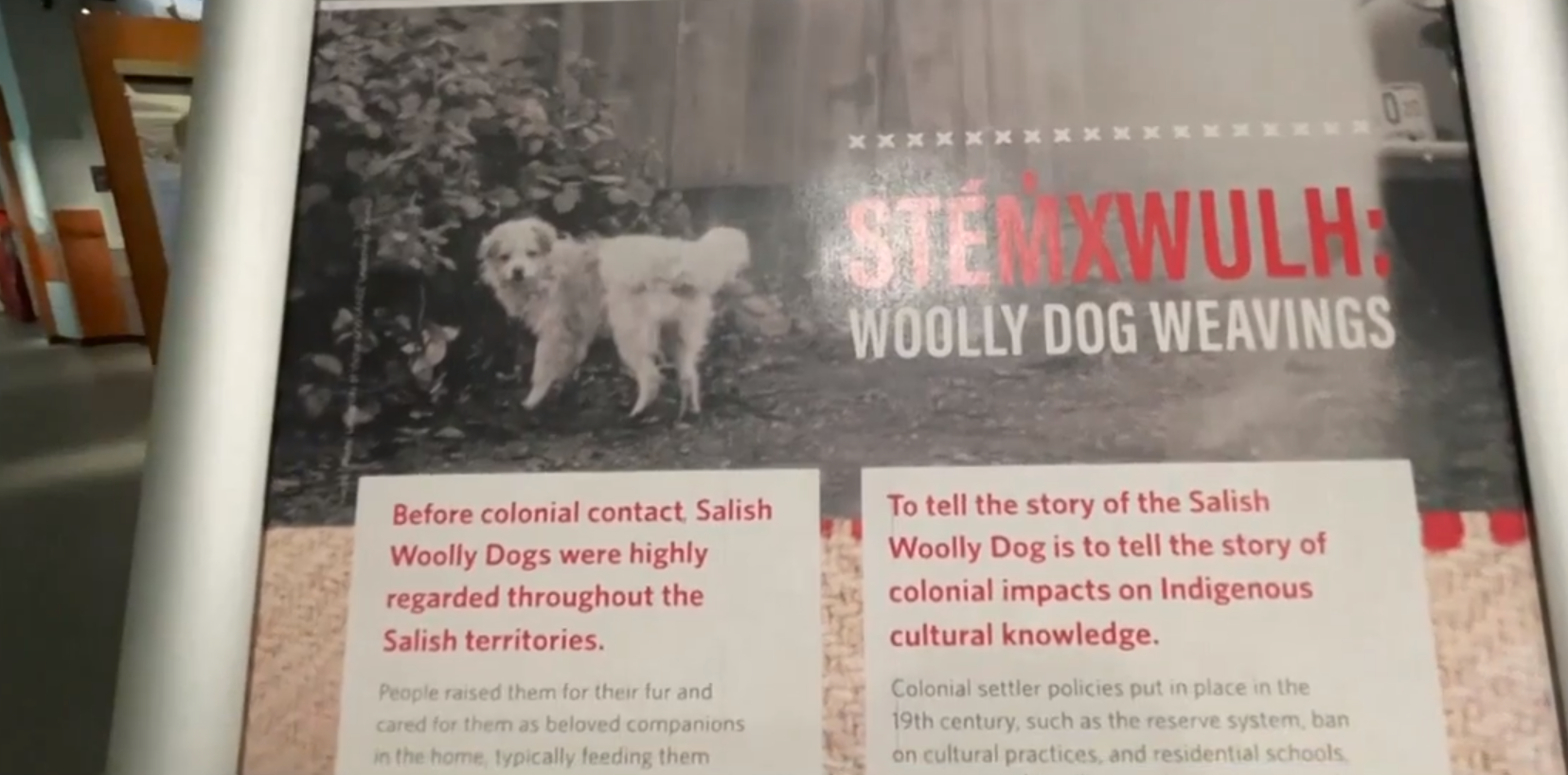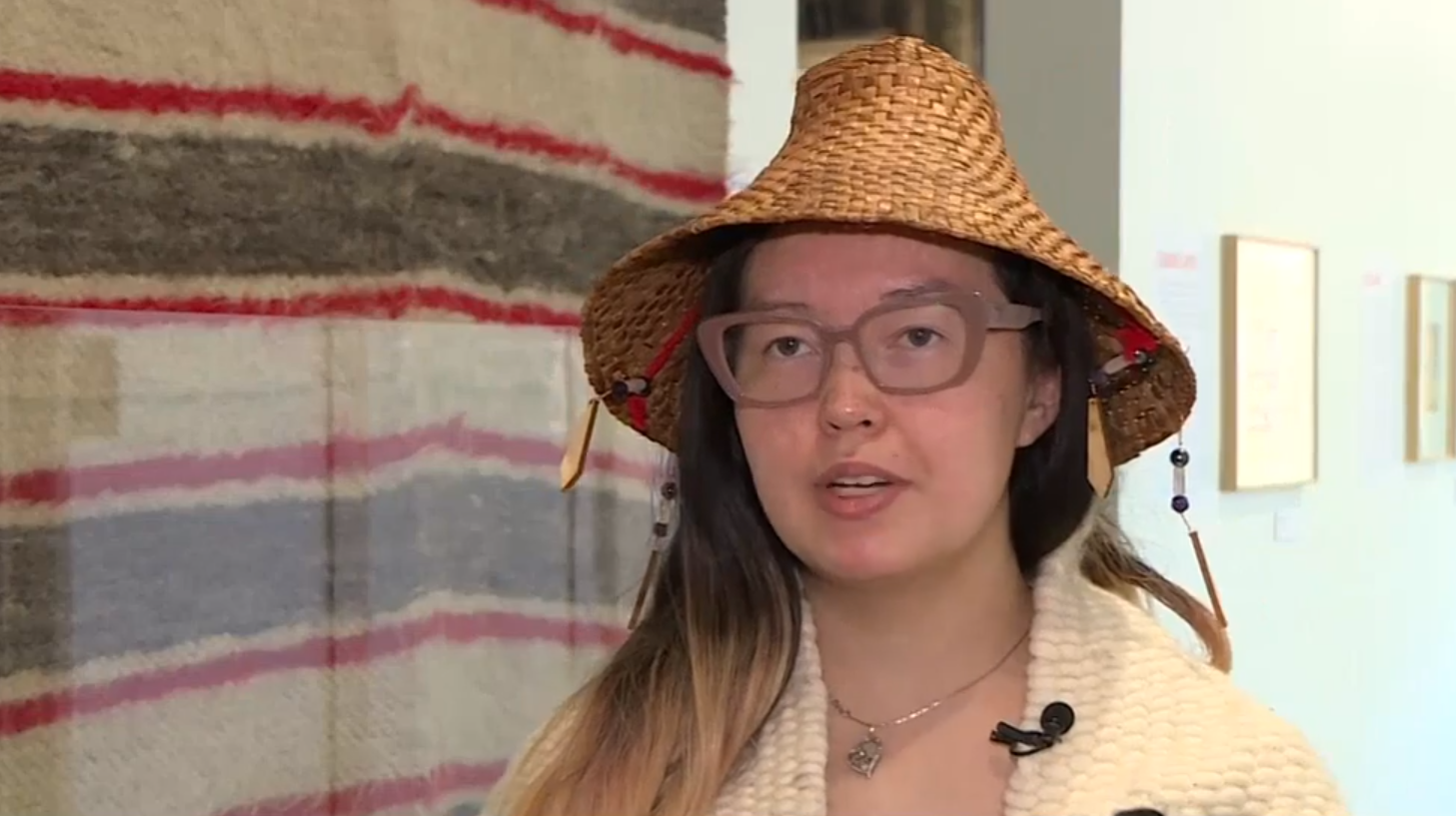Why did the Salish Woolly Dog go extinct? Could it come back?
Posted May 11, 2023 11:08 pm.
Last Updated May 12, 2023 6:19 am.
At the Museum of North Vancouver (MONOVA), there’s a pair of ceremonial blankets made from the hair of a Coast Salish dog that went extinct because of colonialism. With the right DNA processing, one biological anthropologist says the dog — in a way — could come back.
What did these Woolly Dogs look like?
Long-haired and coyote-like, the Woolly Dog was bred for its fur by Coast Salish Peoples in B.C. and Washington state.
But it eventually went extinct according to MONOVA Indigenous Cultural Programmer Senaqwila Wyss, who points out the dog’s name in Sḵwx̱wú7mesh sníchim, the Squamish language, referred to how fluffy it was.
Wyss created the exhibition on the Salish Woolly Dog at the Museum of North Vancouver, which includes illustrations of the furry dogs by other artists.

Coast Salish Woolly Dogs were bred for their fur until colonization push them to extinction. (CityNews/Kier Junos)
She says they were kept in packs of 12 to 20 animals, fed raw and cooked salmon, and were an important part of Coast Salish community life.
She says the dog had such a prominent role in the community, it was among the necessities people would grab and take along in the event of an emergency.
A biological anthropologist says DNA processing could guide selective breeding and, in a way, bring it back.
“If you had a really good genome of a woolly dog, that would kind of be the first step. And of course, DNA is also preserved in these blankets, so that’s another way of reconstructing what the genome would be like,” said UBC associate professor Camilla Speller.

Senaqwila Wyss at MONOVA in North Vancouver May 11, 2023. (CityNews/Kier Junos)
“Or even to do something like gene editing where you could edit the genome of a – it’s hard to find any kind of closely related dog – but of a dog to make it appear to have those kinds of woolly tendencies.”
Wyss says the eventual extinction of the dogs was the direct result of colonialism, saying genocidal policies, the ban of cultural practices, and residential schools all contributed to its extinction.
She was taken aback when she says other academic and online sources claimed otherwise.
“Everything said ‘the Salish People didn’t want to care for their dogs anymore.'”
“To me, it was really a shock. But also I wasn’t surprised as well. Just looking at the narrative of colonialism is to say that, we chose to change our lifestyle – as a kind of nice way of sugar-coating that we were oppressed.”
The last surviving pelt of a Salish Woolly Dog is at the Smithsonian Institution and Speller says it is currently undergoing genome sequencing.










